HOW TO MAKE YOUR OWN DIAMOND STUDS
THE TIPS AND TRICKS TO PICKING DIAMONDS FOR DIAMOND STUD EARRINGS
This post contains affiliate links. If you use these links to buy something I may earn a commission. Thanks! As an Amazon Associate I also earn from qualifying purchases.
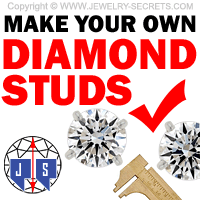
Want to make your own diamond studs?
Who wouldn’t?
Many places sell loose diamonds, and many people have either hand-me-down diamonds, or diamonds they just don’t use anymore (old mountings from an engagement ring upgrade…)
So what can you do?
Create your own diamond stud earrings!
And it’s actually pretty simple.
There’s only a few things you need to know in order to match your diamonds efficiently. So let’s get to it…
1) The MM Size
This is by far the most important step… Match the width of the stone, otherwise one earring will look bigger than the other (lopsided, unbalanced).
And when you match them, don’t match them by carat weight (like .50 ct each ear). This is because diamonds are like people; they come in all shapes and proportions. Two people weighing exactly 150 lbs could look totally different. One could be tall and skinny, the other short and squat.
Will they look the same?
NOPE!
So with diamonds, the mm (millimeter) width of the diamond is what matters more than anything. That way, at a glance, they’ll appear similar and equal, even though they may not be (one could be .25 cts, the other .30 cts, and they could still match perfectly).
See below…
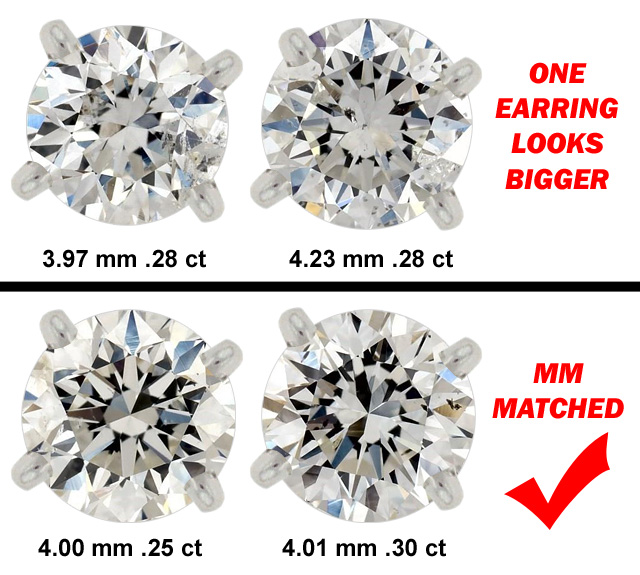
The next step is COLOR:
Color, for the most part, is not a huge issue… Most people can’t distinguish a white diamond from an off-white diamond (which is colorless and near colorless)…
Unless the color is OBVIOUS!
If one diamond faces up yellow, and looks more yellow than the other stone, I would keep matching. The goal is to get colors that look the same hue (which is generally anything in these color ranges: D, E, F, G, H, I)
Below that point (J and lower), you may see yellow, and sometimes a lot of yellow!
See diamond color differences below…
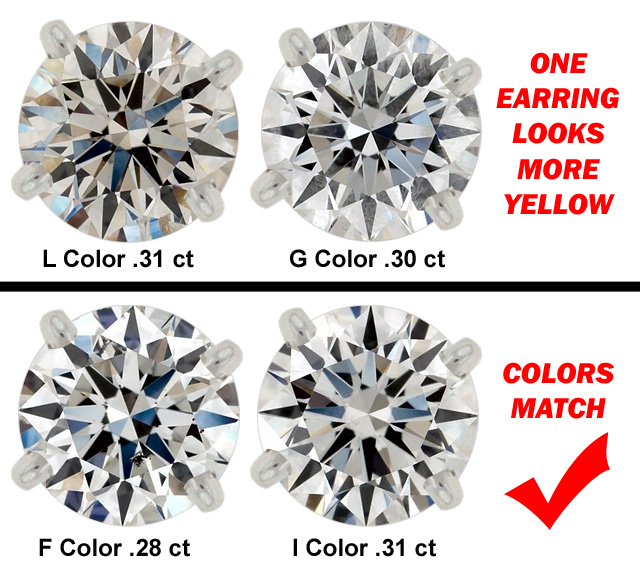
Clarity doesn’t matter!
Unless one of the stones has huge chunks of black carbon in them… Don’t worry about it. No one’s going to know if it’s Flawless or an I1. Really! Especially since the diamonds are in your ears where no one leans in that close to scrutinize them (unlike an engagement ring).
Generally it’s best to stick within a few clarity grades, like SI1-I1 (which is the standard earring quality anyway).
But still, unless there’s black chunks, or one diamond is really milky and filled with white inclusions, it won’t be an issue.
See what I mean below…
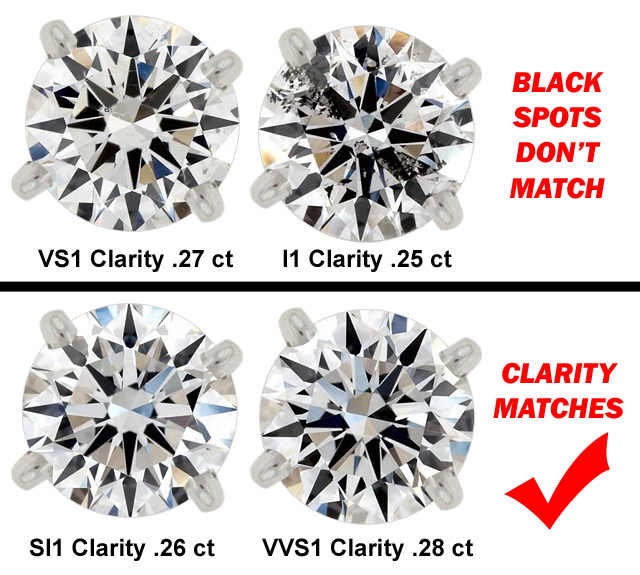
Plus, with diamond earrings, since the weight is split up between the ears (1 carat is two .50 carat stones), they’re really too small to see the flaws. When you get into bigger diamonds, like 1 carat each, then maybe you’ll have to stick with SI1 or higher, just to be safe.
Generally, it really is just the mm width, the color (not being yellow), and if the flaws are noticeable and stand out.
Those are the things you need to check.
It doesn’t matter if you’re matching one earring you lost, setting up new ones, or creating earrings out of diamonds you had in other rings or pendants… They have to match from a distance.
And to match the mm…
You’ll need to get yourself a mm gauge (brass sliders are common and work fine, but the digital gauges are easier and quicker)…
They also list the mm width of a diamond on any diamond report…
Color is quick enough to eye-ball. If it looks yellow, go for J-K-L-M color… If it looks white, stick with D-I color.
Clarity, eye-ball that too. Do you see black spots? Get an I2 or I3. If the diamond looks chalky, full of fog (white inclusions or clouds), then look at other I clarity diamonds (I clarity diamonds are where you can see the inclusions with the bare eye). If the diamond looks clean, go with SI2 or higher.
And that’s it!
Or… You could just head on over to James Allen and design your own studs HERE!
Making your own earrings is FUN, EASY, and you’ll be wearing new studs in no time.
Cheers! :)


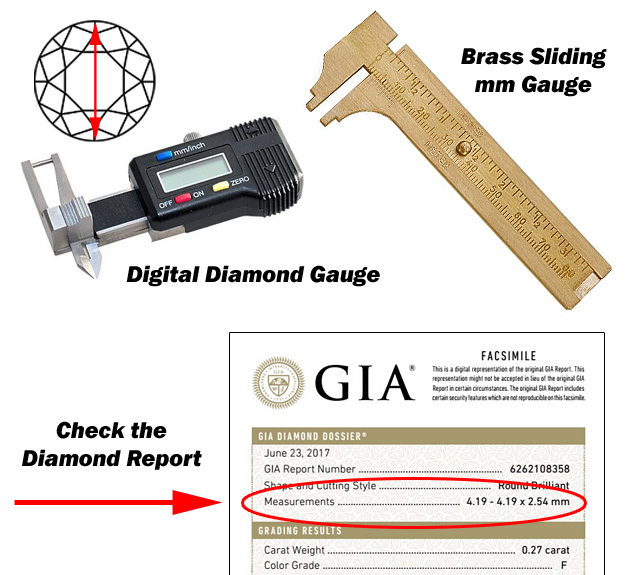
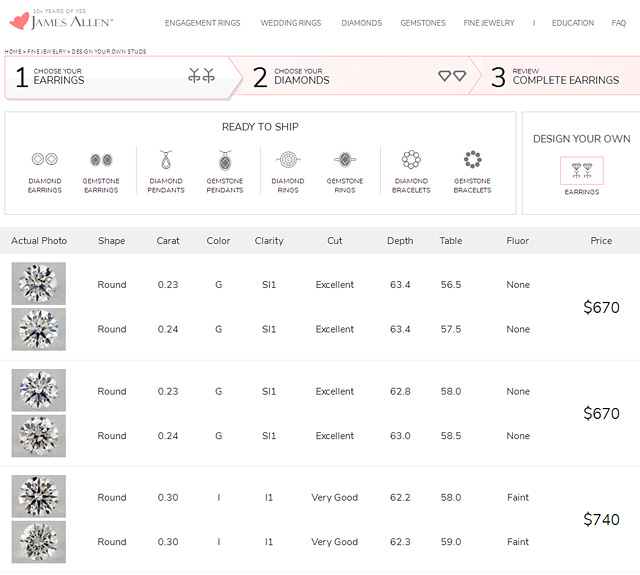












Leave a comment